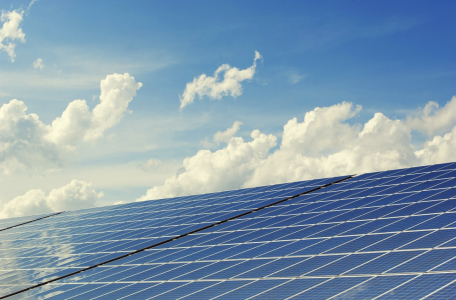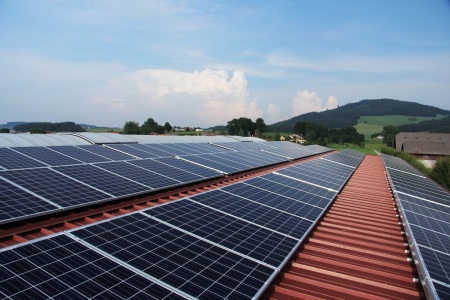Slash your energy bills with these life-saving tips during Australia's temperature plunge!
As winter rears its chilly head and temperatures plummet all over our fair country, one thing will inevitably soar—our energy bills! But worry not, dear members of the Seniors Discount Club, we've got a few tricks up our cosy sleeves to help you save, even as the temperature drops.
Energy expert and Solar Analytics CEO Stefan Jarnason have seen a massive increase in Aussies scrambling to cut back on their alarming energy costs, so we're ready to arm you with the best advice for keeping your wallet warm and your toes toasty.
'Most of us have recently received a shock electricity bill that was much higher than we expected, but it's going to get worse,' warns Mr Jarnason. He ought to know: his Australian-made app helps customers find the best solar electricity plans to stave off the winter chill.

Switching providers is one strategy to get ahead of soaring bills. John Tester, a former aircraft engineer who switched providers in November, hasn't paid a single cent for power since his latest move! Selling power back to the grid, Mr Tester has actually made $192. Talk about turning the tables on power providers!
But how does he do that, you ask?
'I swap electricity providers to get the best deal I can,' he said from his southwestern Sydney home. 'There's no loyalty. You've got to go out and get the best deal.'

For those not ready to make the leap into the solar revolution, there are still ways to save. Unfortunately, it might mean wading through tricky industry jargon and hidden fees—are the power companies using these as a means of discouraging savvy shopping?
Beware the 'loyalty tax'—that silent sneak that slips into our bills when we stick with the same provider out of habit. Energy operators count on the fact their customers are just too busy to hunt bargains, making it all too easy to get complacent and pay more than needed.
Energy bills can also be muddled with complex language and confusing charges: 'Time of use, supply charge, feed-in-tariff, and shoulder period' are just a few examples. Sadly, these misleading terms might be intended to confuse consumers and leave them feeling overwhelmed and unsure of which way to turn—making it even harder to figure out if you're getting a good deal.
Hidden fees and charges only add to the anxiety, often buried deep in the fine print of a contract. Paper bills, late payments and early contract termination are just a few of the sneaky financial traps that energy providers hope you'll fall into.
And don't let those sweet sign-up deals fool you! Attractive offers, cashback, gift cards, and discounts on the first bill might be just the bait to get you to switch—but always read the terms and conditions to ensure that no hidden costs or fees lurk in the shadows.
The first step towards more efficient energy usage is to keep track of how energy is used in your home. There’s a range of products available to help monitor your energy consumption, such as smart metres, energy monitors, and solar inverters. These devices track the energy being used and allow you to see where you’re using the most energy or wasting it unnecessarily.
Once you’ve identified problem areas that require adjustments, there are a few simple and cost-effective solutions you could try. One of the best options is to switch off appliances and devices when they’re not in use and even to unplug them completely. This will reduce the amount of energy being used by those devices and help you save money on your energy bills. Some appliances also come with an energy-saving setting that can also be used to reduce power consumption.
Another great way to save energy is to take advantage of energy-saving lamps. These lights use up to 80% less energy than traditional incandescent light bulbs, making them a great energy-saving option. Additionally, you can switch to energy-efficient appliances, such as ovens, refrigerators, and dishwashers, for even bigger savings.
By monitoring and managing energy usage in your home, you can save a lot of money in the long run. The key is to start tracking and take preventive measures as soon as possible to ensure that you’re not wasting energy.
 Now, take heart, dear readers—armed with this knowledge, you can outsmart the energy providers and save big! So wrap up tight and take on the elements without the dread of soaring energy bills. After all, there's always a little more adventure in the fight for our hard-earned money! Stay warm and happy saving!
Now, take heart, dear readers—armed with this knowledge, you can outsmart the energy providers and save big! So wrap up tight and take on the elements without the dread of soaring energy bills. After all, there's always a little more adventure in the fight for our hard-earned money! Stay warm and happy saving!
Energy expert and Solar Analytics CEO Stefan Jarnason have seen a massive increase in Aussies scrambling to cut back on their alarming energy costs, so we're ready to arm you with the best advice for keeping your wallet warm and your toes toasty.
'Most of us have recently received a shock electricity bill that was much higher than we expected, but it's going to get worse,' warns Mr Jarnason. He ought to know: his Australian-made app helps customers find the best solar electricity plans to stave off the winter chill.

Switching providers is one strategy to get ahead of soaring bills. John Tester, a former aircraft engineer who switched providers in November, hasn't paid a single cent for power since his latest move! Selling power back to the grid, Mr Tester has actually made $192. Talk about turning the tables on power providers!
But how does he do that, you ask?
'I swap electricity providers to get the best deal I can,' he said from his southwestern Sydney home. 'There's no loyalty. You've got to go out and get the best deal.'

For those not ready to make the leap into the solar revolution, there are still ways to save. Unfortunately, it might mean wading through tricky industry jargon and hidden fees—are the power companies using these as a means of discouraging savvy shopping?
Beware the 'loyalty tax'—that silent sneak that slips into our bills when we stick with the same provider out of habit. Energy operators count on the fact their customers are just too busy to hunt bargains, making it all too easy to get complacent and pay more than needed.
Energy bills can also be muddled with complex language and confusing charges: 'Time of use, supply charge, feed-in-tariff, and shoulder period' are just a few examples. Sadly, these misleading terms might be intended to confuse consumers and leave them feeling overwhelmed and unsure of which way to turn—making it even harder to figure out if you're getting a good deal.
Hidden fees and charges only add to the anxiety, often buried deep in the fine print of a contract. Paper bills, late payments and early contract termination are just a few of the sneaky financial traps that energy providers hope you'll fall into.
And don't let those sweet sign-up deals fool you! Attractive offers, cashback, gift cards, and discounts on the first bill might be just the bait to get you to switch—but always read the terms and conditions to ensure that no hidden costs or fees lurk in the shadows.
Monitoring and Managing Energy Usage at Home
As temperatures send energy bills soaring, savvy Aussies are taking control of their energy consumption by monitoring and managing usage in their homes. By keeping a close eye on your energy consumption, you can drastically reduce your monthly bill; it’s easier than you might think.The first step towards more efficient energy usage is to keep track of how energy is used in your home. There’s a range of products available to help monitor your energy consumption, such as smart metres, energy monitors, and solar inverters. These devices track the energy being used and allow you to see where you’re using the most energy or wasting it unnecessarily.
Once you’ve identified problem areas that require adjustments, there are a few simple and cost-effective solutions you could try. One of the best options is to switch off appliances and devices when they’re not in use and even to unplug them completely. This will reduce the amount of energy being used by those devices and help you save money on your energy bills. Some appliances also come with an energy-saving setting that can also be used to reduce power consumption.
Another great way to save energy is to take advantage of energy-saving lamps. These lights use up to 80% less energy than traditional incandescent light bulbs, making them a great energy-saving option. Additionally, you can switch to energy-efficient appliances, such as ovens, refrigerators, and dishwashers, for even bigger savings.
By monitoring and managing energy usage in your home, you can save a lot of money in the long run. The key is to start tracking and take preventive measures as soon as possible to ensure that you’re not wasting energy.
Key Takeaways
- Households across Australia are bracing for rising energy bills as temperatures drop.
- Energy expert Stefan Jarnason shares that using solar electricity can help cut down on energy costs, with Solar Analytics claiming it can save at least $2000 every year.
- The loyalty tax, complex and confusing charges, hidden fees, and sign-up sweeteners that turn sour are some of the sneaky tricks used by energy operators.
- To keep costs low, be aware of these tricks and consider switching to solar or constantly researching to find the best energy plans and deals.







